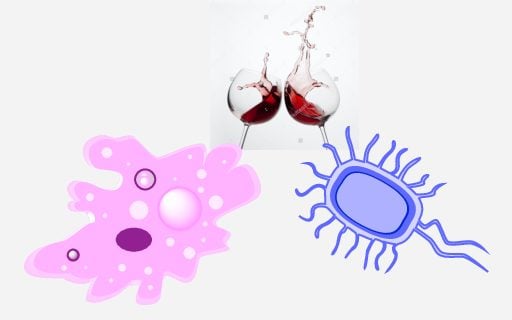In Part 1, I introduced the relationship of bacteria and cancer. In Part 2, I detailed how a single bacterium Helicobacter pylori leads to stomach cancer. In Part 3, I’ll outline the curious associations of the microbiota and colon cancer, a story which is currently being unfolded in labs across the world. White-haired scientists have finally opened up this puzzle to folks of all hair colors!
The Process
The main method for investigating the role of the microbiota in colon cancer is through metagenomics. Since many bacteria in the gut don’t grow on conventional laboratory food, scientists take a sample (biopsy or stool sample), mash it up and use PCR to amplify a piece of the bacterial DNA that is unique to each species. A bacterial barcode, if you will. Using these barcodes, scientists can tell who is there and in what abundance.
The Consensus
Across multiple studies, scientists have not found a bacterial “smoking gun” for colon cancer. They can, however, tell that normal tissue and cancer tissue communities have different compositions.
The Chicken or the Egg?
The huge intellectual barrier to these findings is demonstrating whether the changes are the cause or the result of colon cancer. Did the changes in the community composition cause cancer? Or did the cancer cause the local microbial communities to change?
Bring on the Scientific Method!
Now that the observation has been made, scientists then think of experiments to distinguish between these two options. Critically, researchers need to know which comes first: change in microbiota or cancer? In a chemically-induced model of colon cancer, treating mice with antibiotics (to disrupt their microbiota before inducing cancer) leads to less tumors. BUT the actual treatment that causes cancer in the mice ALSO changes the gut microbiota, which itself has cancer-transmitting properties. SO the conclusion is…changing the microbiota leads to less and more cancer….
?????
Complicated results to be sure. But also, I think, gets to the heart of the issue. Bacterial interactions lead to protective, neutral, AND disruptive properties. Asking “does change matter?” is like taking a sledgehammer to the problem. The subtler, more accurate questions involve directed change of the model communities to match the differences seen in humans. GOOD LORD, just thought of a great experiment: feed gut microbiota of humans with colon cancer to germ-free mice (mice with no gut bacteria of their own). Holy moly a quick search shows that someone ALREADY ASKED THIS in August 2017. You’re watching science at work, people!!
Can the Microbiota Isolated from Human Colon Cancer Tissue Cause Cancer in Mice?
Drum roll please: colon cancer microbiota from 5 human patients does NOT increase polyps/dysplasia in germ-free mice. This suggests that the bacteria isolated from colonic tissue is not sufficient to cause cancer by itself. BUT after letting the mice live for 32 weeks (human equivalency of 42 years), there was increased cell division in the colonic epithelium of colon cancer stool treated mice compared to mice treated with stool from healthy controls. And from Part I, y’all know that cancer is just uncontrolled cell division kick started by mutation….
BUT WAIT AMANDA, you say, didn’t you just explain that changing the microbiota with chemicals produces a gut community that increases tumorigenesis in the next generation of mice?
Why yes….yes I did. And I don’t think the human sample experiment disagrees with this. In fact, when those scientists gave the colon cancer microbiota to conventional mice (those with resident gut bacteria), similar to the first paper I discussed, the human CRC microbiota did lead to more polyps and dysplasia.
So what’s the difference between germ-free and conventional mice that could cause human colon cancer microbiota to promote tumorigenesis or not? It could be that the immune systems of germ-free mice are different and less developed (less chronic inflammation??). It could be that a particular microbial community enhances the tumorigenesis of the cancer-inducing chemical. It could be something I’m not thinking of (and probably is).
The Murky Conclusion Ripe with Opportunity
As someone trained in molecular biology, there MUST be a mechanism. Cataloging all the crazy results will eventually display patterns that lead to more sophisticated questions. By breaking down the problem in manageable bits, we can slowly but surely uncover the truth. We can do this, humanity! This so ends the tripartite series on microbial communities and cancer but rest assured, if there’s a breakthrough….I’ll make sure you hear about it!
This week, I shall toast to the Olympics. Go USA! Go Unified Korean Women’s Hockey Team (they will most likely lose and I’m mentally prepared for that…but gosh I appreciate their amazing North and South teamwork!!)!!



